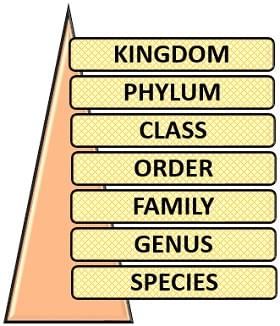Multiple Choice Questions (MCQs): The Living World - NEET MCQ
20 Questions MCQ Test - Multiple Choice Questions (MCQs): The Living World
What does binomial nomenclature refer to?
What is the smallest taxonomic category?
The taxonomic category below the level of family is?
Select the incorrect statements:
(a) Lower the taxon, more are the characteristics shared by members.
(b) Order is the assemblage of genera, which exhibit a few similar characters.
(c) Cat and dog belong to the same family of Felidae.
(d) Binomial nomenclature was introduced by Carolus Linnaeus.
Statement: In binomial nomenclature, the first name represents the genus, and the second name represents the specific epithet.
Statement A: Species is the basic unit of classification.
Statement B: Two plants can be said to belong to the same species if they can reproduce freely with each other and form seeds.
Statement A: The process of classification is called taxonomy.
Statement B: Characterisation, identification, classification and nomenclature are basic to taxonomy.
The action that the environment does on an organism is called ________
Which taxonomic category is used to group related genera?
Primate and Carnivora are placed together in the same?
The smallest unit of classification is known as:
What is the difference between the taxonomic categories, division and phylum?
Which among the following best describes the word “Growth” in living organisms?
What does the specific epithet 'leo' refer to in Panthera leo?
Which one of the following criteria is/are essential and form the basis of modern taxonomic studies?
The scientific term for biological classification categories is the:
Binomial Nomenclature is the system
p. Given by Carolus Linnaeus
q. Practiced by scientists of Botany only
r. Provides a name with two components
s. Inconvenient than earlier naming systems
How many of the statements are correct?















